The conflict in Ukraine has profoundly reshaped the operational landscape of Air Defense, underscoring the necessity of transitioning from primarily short-range systems to a more integrated approach that includes medium and long-range capabilities. This shift is driven by the diverse and sophisticated nature of modern threats encountered on the battlefield. The following article delves into the key operational lessons from Ukraine, their implications for future Air Defense strategies, and the race to increase current Ground-Based Air Defense missile ranges.
Modern Threats, Post Ukraine
One of the primary lessons from the Ukraine conflict is the diverse array of aerial threats that modern militaries must contend with. These threats include traditional aircraft and helicopters, but also a significant increase in unmanned aerial systems (UAS), cruise missiles, loitering munitions, and short-range ballistic missiles, which can attack from all directions. The combined employment of these technologies has demonstrated the limitations of short-range air defense systems, which were the main pillar of in-battle and national Air Defense before the Ukraine war. Short-range systems have proved inadequate for intercepting and mitigating long-range, agile, and highly kinetic threats launched far beyond their engagement envelope or high altitudes.
Facing a barrage of diverse and advanced threats, including drones, UAS, manned aircraft, cruise missiles, loitering munitions, and tactical ballistic missiles, and the inability to counter these threats with short-range systems alone adequately, highlighted significant gaps in Ukraine’s air defense strategy. Consequently, a concerted effort has been made to upgrade and complement existing short-range systems with medium and long-range interceptors.
These lessons have driven countries worldwide to reassess their air defense strategies. The evolving threat landscape, characterized by advanced missile technologies and diverse aerial threats, necessitates a comprehensive approach to air defense. The following operational lessons have been pivotal in reshaping air defense requirements:
- Integrated Defense Networks: The need for a layered and integrated air defense network became evident. Systems like NASAMS and IRIS-T are now undergoing integration into a cohesive network, providing overlapping coverage and enhanced situational awareness.
- Countering UAVs and Loitering Munitions: The proliferation of unmanned aerial vehicles (UAVs) and loitering munitions in the conflict highlighted the need for systems capable of engaging these low-cost, high-impact threats at various ranges. In most cases, low-cost VSHORAD missiles and other low-cost solutions like soft-kill systems can adequately intercept these systems.
- Adaptive and Modular Systems: Flexibility in air defense systems has become crucial. Modular Air Defense systems allow forces to adapt quickly to changing threats by integrating different interceptors and ranges as needed.
- Rapid Deployment and Mobility: The ability to quickly deploy and reposition air defense units is vital in a dynamic combat environment. Systems with mobile configurations, such as the VL MICA, provide tactical flexibility and can be moved to protect critical assets as the threat landscape evolves.
- Extended Range Capabilities: The ability to intercept threats at greater distances has become a priority. This shift is exemplified by already operational longer-range interceptors like the Barak ER, which can engage high-altitude and long-distance threats, providing a strategic depth to the defense network.
- Adaptation to Electronic Warfare and Cyber Threats: The Ukraine conflict has also highlighted the growing role of electronic warfare (EW) and cyber threats in modern air defense operations. Adversaries have increasingly employed electronic jamming and cyber attacks to disrupt communication and targeting systems, necessitating the development of air defense systems with robust EW and cyber resilience.
- Enhancements in Detection and Tracking: Modern threats, such as low-flying cruise missiles and small, agile drones, require sophisticated radar and sensor systems capable of detecting and tracking them at longer ranges and with greater accuracy. The Ukrainian conflict has demonstrated the effectiveness of integrated radar networks that can provide early warning and coordinate responses across different layers of defense.
All Around Protection
A key concept in modern air defense is providing 360-degree protection, ensuring that threats can be intercepted from any direction. However, short-range missiles often exhibit a significant shortcoming in achieving this, as they are usually directionally oriented, often covering a max of 90-120 degrees. A real 360-degree system requires the missiles to be launched vertically, necessitating thrust vectoring technology for missile stabilization during the first phase of the launch. Although such a system is significantly more effective, many producers do not want to employ such technology as it increases the system’s development and production costs. Most ground-to-air missiles are converted to air-to-air missiles, making this vectoring task impossible. So essentially, this may keep the costs lower but will require up to 4 times the number of batteries to provide a real 360-degree defense against modern threats.
The logistic advantage of converting an air-to-air missile to a ground-to-air system is that the missiles can perform dual missions, installed both on fighters and on-ground systems, thus theoretically reducing the number of missiles procured. However, this has significant shortcomings since it results in sub-optimal ground-to-air interception performance. Air-to-air missiles are designed to be hung on fighter wing stores and have weight, size, and center-of-gravity limitations due to that; these limits are irrelevant when firing from the ground. In addition, air-to-air missiles are designed with large aerodynamic surfaces fo hi-g maneuvers upon firing – for example, engagement in a head-on interception pass. This airborne aerodynamic design is not optimized for ground operation and degrades the overall kill probability due to high drag, which causes excessive airspeed bleeding on the way to the target. Thus, an initially designed sole-purpose ground-to-air missile will typically have a significantly better interception performance and kill probability for ground operations. This is crucial for battle performance analysis and decision of missile stock quantities.
Short-range air defense (SHORAD) systems are typically designed to protect against immediate, proximal threats. Their engagement envelopes are often limited to a narrow arc and lower altitudes. For example, systems like the older variants of the Stinger missile are primarily effective within a close radius and struggle with low-angle, high-speed threats that can exploit the gaps in coverage near the horizon. These systems often lack the advanced radar and sensor capabilities to effectively track and intercept targets at such angles and distances.
Interception Economy: Adapting Weapons to Threats
The concept of interception economy is crucial in modern air defense strategy, where matching the cost and capability of interceptors to the threat type optimizes both effectiveness and cost-efficiency. Very Short Range Air Defense (VSHORAD) systems are ideal for low-cost, slow-moving threats such as drones and slow-flying UAS, loitering munitions, or manned platforms. These systems, such as the Stinger missile or the Russian Strela, are designed to engage targets within a few kilometers. They are cost-effective solutions for neutralizing small, slow, and relatively unsophisticated threats without expending the resources and firepower of more advanced systems. Drones, often used for surveillance and targeted strikes, can be efficiently countered by VSHORAD or soft-kill systems due to their limited speed and maneuverability.
Short to medium-range missile systems are more appropriate for medium-range threats such as fast jets, helicopters, and certain cruise missiles. Systems like the IRIS-T SLM and NASAMS are designed to engage in future targets up to 40 kilometers and 50 kilometers away, respectively. These systems have advanced radar and sensor technology, allowing for accurate tracking and interception of faster and more maneuverable threats. Cruise missiles, for instance, can be intercepted effectively by these medium-range systems, preventing them from reaching critical infrastructure and strategic targets. These systems balance range and cost, making them suitable for defending against a broader spectrum of aerial threats without the excessive expense associated with long-range interceptors.
Long-range air defense systems are necessary for larger, more sophisticated threats such as tactical ballistic missiles and high-altitude, high-speed aircraft. The Barak ER, capable of engaging targets up to 150 kilometers away, and the Patriot Missile, designed for extended-range engagements, are prime examples of systems suited for these threats. Tactical ballistic missiles, which can travel at high velocities and altitudes, require interceptors with advanced guidance systems and longer reach to ensure successful interception. These long-range systems are more costly but indispensable for protecting against high-impact threats that can cause significant damage if not intercepted at a safe distance. By reserving these high-end systems for the most dangerous and far-reaching threats, military forces can maintain a cost-effective and efficient air defense posture.
Longer Ranges to Counter New Threats
The necessity for longer-range missile systems has become paramount in modern air defense due to aerial threats’ increasingly sophisticated and diverse nature. While effective for immediate and low-altitude threats, traditional short-range systems fall short against targets that operate from greater distances and higher altitudes. Modern threats, such as cruise missiles, drones, and tactical ballistic missiles, often engage from beyond the effective range of short-range defenses, necessitating the development and deployment of medium and long-range systems and supporting detection capabilities. These systems extend the protective envelope, ensuring early detection and interception, thereby enhancing overall defense capabilities.
Longer-range missile systems are crucial in countering the threat posed by cruise missiles. These missiles can travel at low altitudes and high speeds, often evading short-range detection systems. For example, during the conflict in Ukraine, Russian cruise missiles demonstrated the ability to strike from hundreds of kilometers away, from any direction, overwhelming short-range defenses. Longer-range systems like the Barak LR or ER and the AMRAAM-ER are designed to intercept such threats at distances well beyond the capabilities of short-range systems, providing a critical layer of defense. By engaging these missiles earlier in their flight paths, these systems mitigate the risk of them reaching their targets and causing significant damage.
The proliferation of unmanned aerial systems (UAS) and loitering munitions has further underscored the need for extended-range capabilities. These threats can loiter over the battlefield, identify high-value targets, and strike with precision. Short-range systems might only detect these threats too late when they are within striking distance. In contrast, medium- and long-range missile systems can engage UAS and loiter munitions at greater distances, preventing them from getting close enough to pose a significant threat.
Tactical ballistic missiles represent another threat category that necessitates longer-range air defense solutions. These missiles can travel at high speeds and altitudes, often delivering payloads over significant distances. Short-range defenses are inadequate for intercepting high-velocity targets, which can strike hundreds of kilometers away. Developing extended-range interceptors provides a critical defensive measure. These systems protect against direct impacts and contribute to the deterrence strategy by complicating the adversary’s attack plans, thereby enhancing overall strategic stability.
The Race for Range Extension
NASAMS, BARAK-MX, IRIS-T, VL-MICA, and Spyder Missile Systems: Current Ranges and Extension Efforts
These lessons learned have not escaped global missile system producers. While some missiles are currently available for longer ranges, most missile manufacturers are in a race against time to extend the range of their offerings. This urgency is driven by the need to effectively counter increasingly sophisticated and distant threats. The following is a summary of the primary systems under development.
NASAMS (National Advanced Surface-to-Air Missile System)
NASAMS, developed by Kongsberg Defence & Aerospace and Raytheon, is a highly adaptable short to medium-air defense system. The current focus is extending the system’s capabilities to handle emerging threats effectively. Raytheon has been integrating the AMRAAM-ER (Extended Range) missile into NASAMS, enhancing its range and altitude capabilities. The AMRAAM-ER aims to offer greater coverage against threats such as drones, cruise missiles, and other aerial targets. This integration is part of ongoing efforts to ensure NASAMS can provide robust defense in increasingly complex airspace environments.
On February 27, 2024, Raytheon successfully completed the first flight test of the new AMRAAM-ER missile variant. It features the AIM-120 C-8’s guidance section, Nammo’s more robust 10-inch rocket motor, and Kongsberg’s 10-inch Control Actuator System, called the Norwegian Propulsion Stack. The firms have been developing the AMRAAM-ER variant since 2015, completing the first two live-fire tests in 2021.
Following the successful test, further development and testing are required, and it will take several years before the AMRAAM-ER is fully developed and operationally deployed.
Notable NASAM users include the United States, Norway, Finland, the Netherlands, Spain, Oman, and Australia.
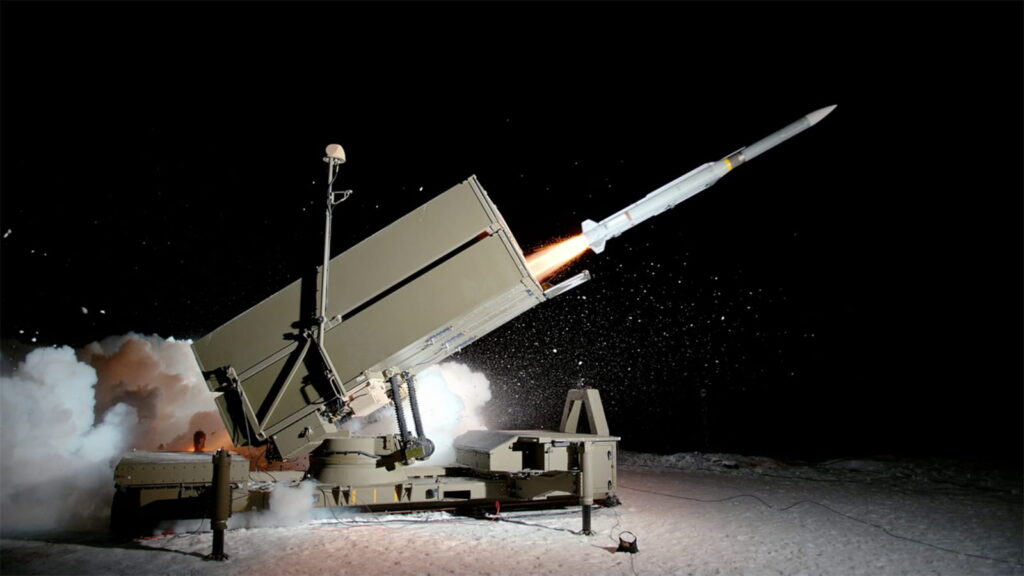
Barak-MX
The Barak MX missile system, developed by Israel Aerospace Industries (IAI), is a versatile air defense solution designed to intercept a variety of aerial threats. The system includes interceptors with ranges of 35 km (Barak MRAD), 70 km (Barak LRAD), and 150 km (Barak ER), making it adaptable to different operational needs. The Barak MX is fully operational and has been successfully deployed in combat scenarios, demonstrating its effectiveness in protecting against aircraft, helicopters, UAVs, cruise missiles and missiles.
The Barak MRAD interceptor, with a range of 35 km, provides short-range defense against immediate threats, ensuring the protection of critical infrastructure and military assets. This missile has proven its capability in numerous engagements, intercepting hostile targets with precision. Its rapid response time and high maneuverability make it ideal for close-range defense scenarios where quick reaction is essential.
For medium and long-range defense, the Barak LRAD and Barak ER interceptors extend the system’s coverage to 70 km and 150 km, respectively. These missiles have successfully intercepted targets at extended ranges in combat, showcasing their ability to neutralize threats before they reach their intended targets. The Barak ER, in particular, offers strategic defense by engaging high-altitude and long-distance threats, including tactical ballistic missiles, thereby enhancing the overall air defense umbrella of the forces utilizing it. The Barak MX’s operational success in various conflicts underscores its reliability and effectiveness as a comprehensive air defense solution.
Unlike air-to-air missiles adapted for surface-to-air use, BARAK MX interceptors were explicitly designed as surface-to-air missiles. Therefore, they are not restricted by limitations dictating the size and weight of missiles carried by aircraft, which also derive the warhead size, kinematics, and effect end-game performance. All of the BARAK MX different interceptors can be launched from the same launcher, enabling the system to deploy the most suitable interceptor from the best-positioned fire unit, thus achieving agile defense capability with the optimal battle economy.
The Barak comprises several pioneering accomplishments such as an operational bi-pulse motor, Net-Centric Engage-on-Remote capability, and all-in-one stand-alone launcher for layered air defense, including proven large-footprint defense against TBM.
Several countries employ the Barak MX missile system to enhance their air defense capabilities. Notable users include Israel, India, Azerbaijan, and the Philippines. It is assumed that there are additional undisclosed customers.
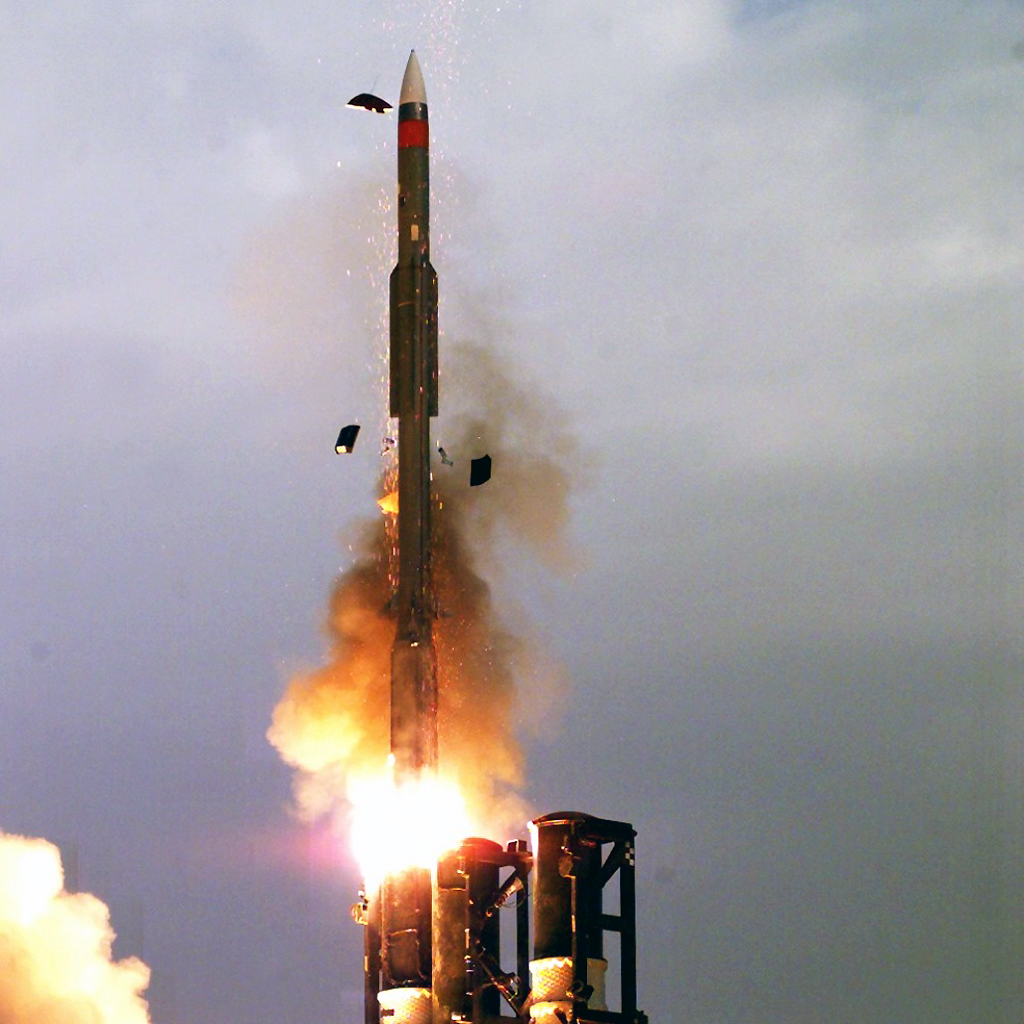
IRIS-T (InfraRed Imaging System Tail/Thrust Vector-Controlled)
Diehl Defence has been actively working on enhancing the range and capabilities of the IRIS-T missile system, introducing the IRIS-T SLX as the latest advancement. The IRIS-T SLX was unveiled at the ILA Berlin Air Show in June 2024, marking a significant upgrade over its predecessors. This new variant is designed to intercept targets at ranges of up to 80 kilometers and altitudes of up to 30 kilometers, doubling the range of the current IRIS-T SLM system. The SLX version incorporates advanced technologies, including an enhanced rocket motor and aerodynamic improvements, to extend its operational reach and effectiveness against modern aerial threats. Currently developed up to Technology Readiness Level (TRL) 5 or 6, IRIS-T SLX will not be available for another four years.
In addition to the IRIS-T SLX, the IRIS-T SLM continues to demonstrate its operational efficiency. Recently, the system has been integrated into the Integrated Battle Command System (IBCS) network through a collaborative effort between Diehl Defence and Northrop Grumman. This integration aims to create a more cohesive and versatile air defense network capable of responding to various threats by combining various sensors and effectors into a unified command and control platform. The IRIS-T SLM has proven its capabilities in real-world scenarios, notably in Ukraine, where it has achieved a high success rate against various aerial targets
Furthermore, Estonia and Latvia have initiated joint procurement efforts to acquire the IRIS-T SLM and SLX systems. Delivery of longer-range missiles is slated towards the end of the decade.
The IRIS-T air defense system is utilized by several countries. Key users include Germany, Sweden, Norway, Italy, Greece, and Spain
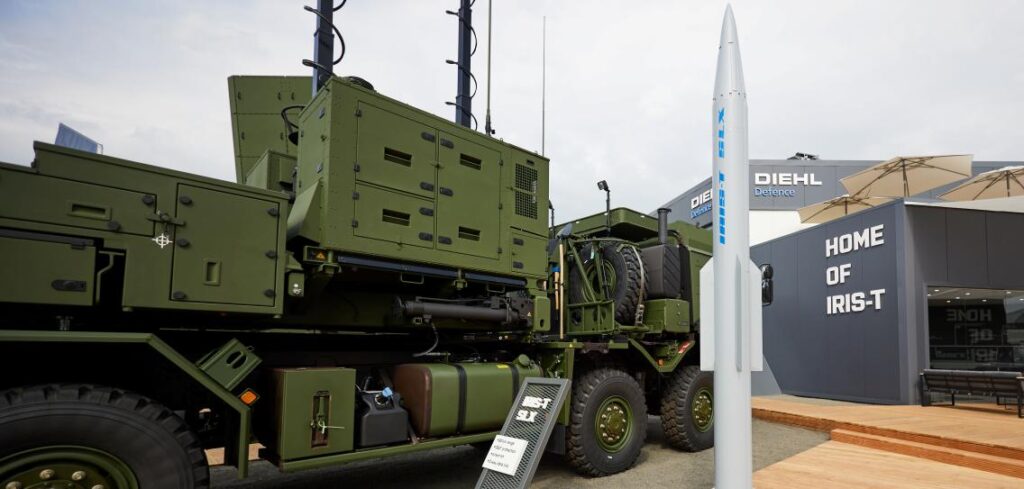
VL-MICA (Vertical Launch – MICA)
MBDA continues to develop and extend the capabilities of the VL MICA missile system, with significant enhancements introduced in the VL MICA NG (New Generation) variant. The VL MICA NG is designed to provide improved range and effectiveness against various aerial threats, integrating advanced technologies to address modern defense needs.
The new MICA NG missile features a bi-pulse motor that significantly increases its range, allowing it to intercept targets at distances of over 40 kilometers. This enhancement is a major upgrade from previous iterations, ensuring the system remains competitive against evolving threats such as UAVs, cruise missiles, and small aircraft. While greatly enhancing interception kill probability, developing a bi-pulse motor is a daunting engineering task that may cause unexpected delays in the program.
Operational benefits of the VL MICA NG include autonomous guidance, high firing rates, and the capability to engage multiple targets simultaneously. The system is designed for both ground-based and naval air defense roles, providing 360-degree protection. Based on new sensor technology, its improved infrared and radio frequency seekers enhance detection and interception capabilities, making it effective against stealthy and low-signature targets.
These developments highlight MBDA’s commitment to advancing air defense technologies and ensuring that the VL MICA system can meet the demands of modern military operations, offering enhanced range, flexibility, and reliability for various defense applications. The VL MICA NG is expected to enter series production by 2028, marking a significant milestone in the evolution of air defense systems
Several countries deploy the VL-MICA air defense system to enhance their aerial protection capabilities. Key users include France, India, Qatar, the United Arab Emirates, Oman, Morocco, and Egypt. These nations utilize the VL-MICA for both naval and land-based defense.
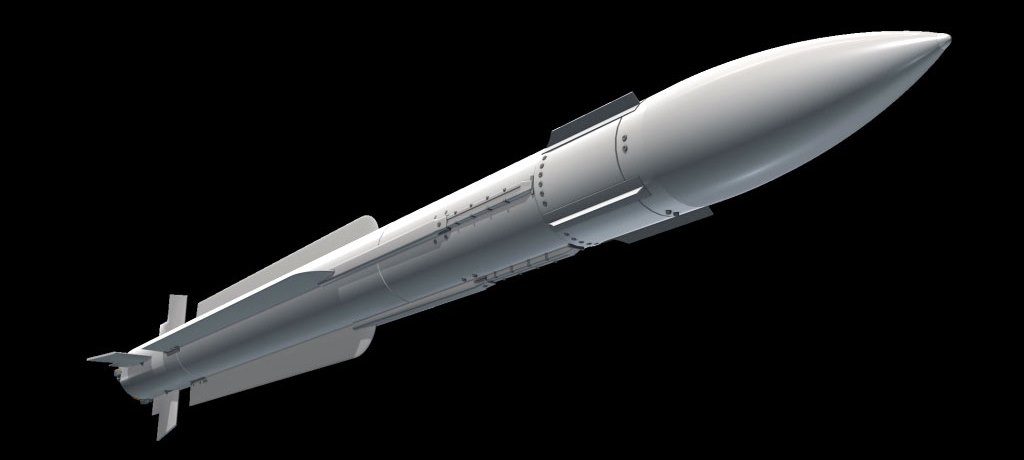
The SPYDER System
Rafael continues to invest in developing Short-Range missiles and has recently (January 2024) successfully tested the SPYDER in its “All-in-One” (AiO) configuration. This new setup integrates a radar with electro-optical systems and launchers on a single platform, allowing for a more efficient and rapid response to threats. The system intercepts threats using two families of RAFAEL-manufactured interceptor missiles, PYTHON and Derby. The AiO configuration can handle multiple threats simultaneously, including UAVs, missiles, and tactical ballistic missiles, with an operational range of up to 20km. The system includes a dual cabin C2 workstation, a launcher for up to eight canisterized missiles, including I-Derby SR/ER and PYTHON-5 SR, a robust power supply, and an embedded trainer.
Further enhancements of the Spyder system include the Spyder ER system, providing an extension of Derby missiles to a 40 km range with the I-Derby version, including a bi-pulse motor. This version was sold to the Czech Republic in 2021 and utilizes design concepts from the I-Derby Air-to-Air version originally offered for the Indian Tejas fighter Jet.
The Czech Republic is an interesting case in point, exemplifying how countries try to adapt to post-Ukraine threats. In 2021, the Czech Ministry of Defence signed a contract valued at approximately $627 million to procure the SPYDER-ER (Extended Range) variant to be delivered within 5 years. This system includes four batteries and is intended to replace the aging 2K12 Kub systems. The systems are slated for delivery in 2026. However, there seem to be some delays, which may be caused by developmental or integration issues, and it has now been reported that the system will be delivered in 2027. This indicates an operational system in the same timeframe as competitors like the VL-MICA.
Quickly implementing lessons learned from Ukraine, In October 2023, the Czechs tasked Rafael to provide 48 longer-range missiles for 80km, which will probably be a boosterized version of the SPYDER -ER.
Rafael has claimed to have upgraded the SPYDER system to counter tactical ballistic missiles (TBMs). This upgrade involves enhancements to the Derby LR 80 km missile interceptor, featuring hardware and software improvements. These upgrades enable the SPYDER system to intercept TBMs for point defense; however, protecting large areas (larger defended footprint) requires longer-range interceptors that are essential for the early engagement of TBMs during midcourse flight and possess enough kinetic energy and maneuvering agility. Longer-range systems can protect extensive regions, including entire cities or critical military assets spread over large geographical areas. They also offer the advantage of multiple engagement opportunities, increasing the likelihood of a successful intercept for such dangerous threats. And, of course, they must be coupled with a strong detection and tracking radar or network to enable this feat.
The Spyder system is used by several customers, the most important of which are India, Vietnam, Singapore, and the Philippines. It is not used in Israel as a ground-based air defense system, although the Israeli Airforce uses the Python and Derby missiles only for air-to-air missions.
Conclusion
Ukraine’s conflict has highlighted the evolving nature of modern aerial threats and the necessity for adaptive missile defense systems. Many nations focused on short-range air defense pre-Ukraine, adequate for countering immediate, low-altitude threats such as aircraft and helicopters. However, the diverse and sophisticated threats seen in Ukraine—ranging from drones and cruise missiles to tactical ballistic missiles—have demonstrated the critical need for a multi-layered defense strategy incorporating short-, medium-, and long-range interceptors.
Most missile producers are racing to extend missile ranges and enhance system capabilities in response to evolving aerial threats. In collaboration with Kongsberg Defence & Aerospace, Raytheon is advancing NASAMS with the AMRAAM-ER missile, featuring a larger rocket motor for increased reach and altitude. Diehl Defence is upgrading the IRIS-T SLX to intercept threats up to 80 kilometers, doubling the range of the current IRIS-T SLM. MBDA is enhancing the VL MICA NG with a dual-pulse rocket motor, boosting its range to over 40 kilometers, as is Rafael with its Spyder system, and IAI is currently offering the operational Barak MX system with interceptors ranging from 35 km (Barak MRAD) to 150 km (Barak ER). As demonstrated in recent conflicts, each company leverages cutting-edge technology to stay competitive, addressing diverse and sophisticated threats.
In conclusion, the lessons learned from Ukraine emphasize the importance of investing in advanced, multi-layered air defense systems. By combining short-, medium–, and long-range capabilities, nations can ensure robust protection against sophisticated and diverse aerial threats, maintaining a secure and resilient defense posture in an increasingly complex and dynamic threat environment.

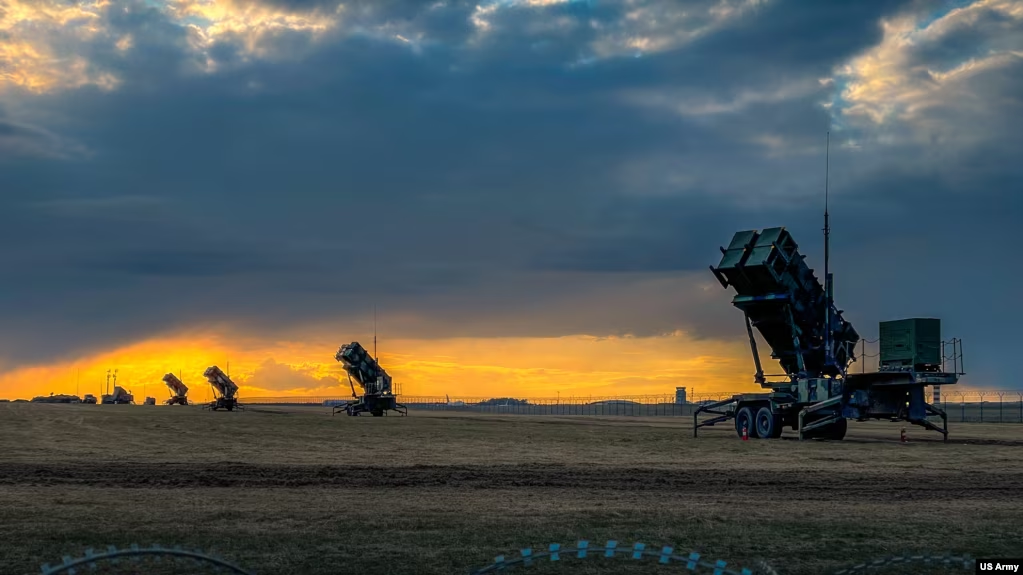
Comments are closed, but trackbacks and pingbacks are open.